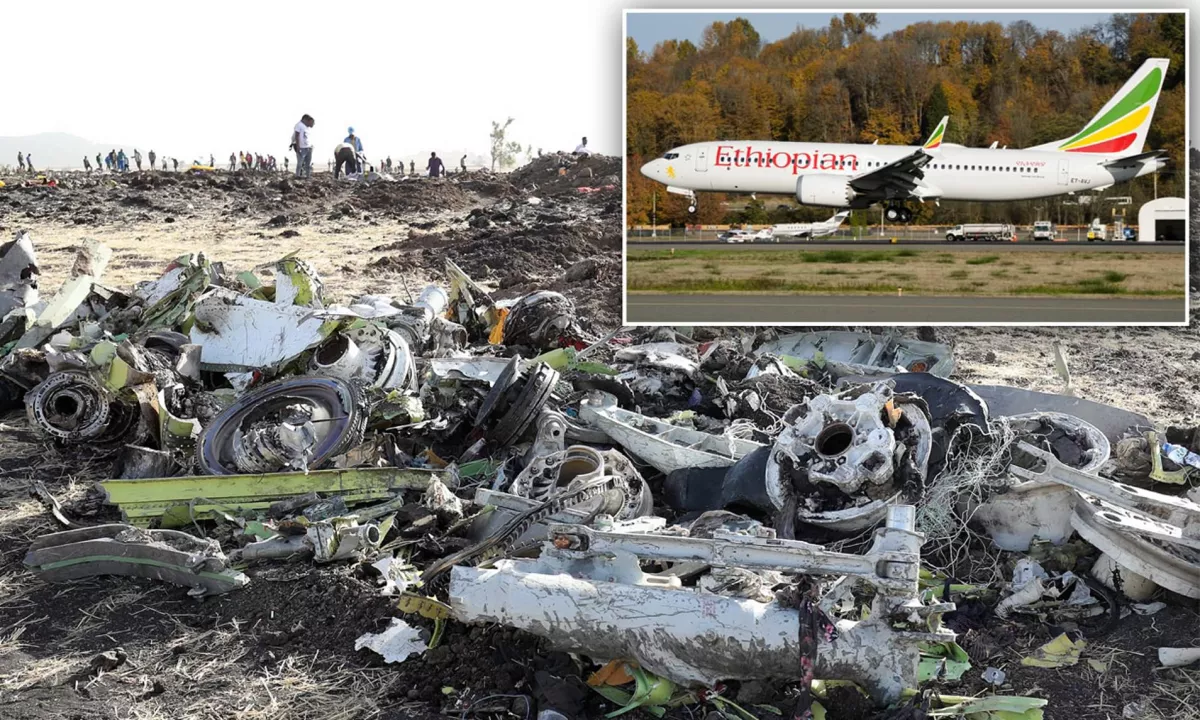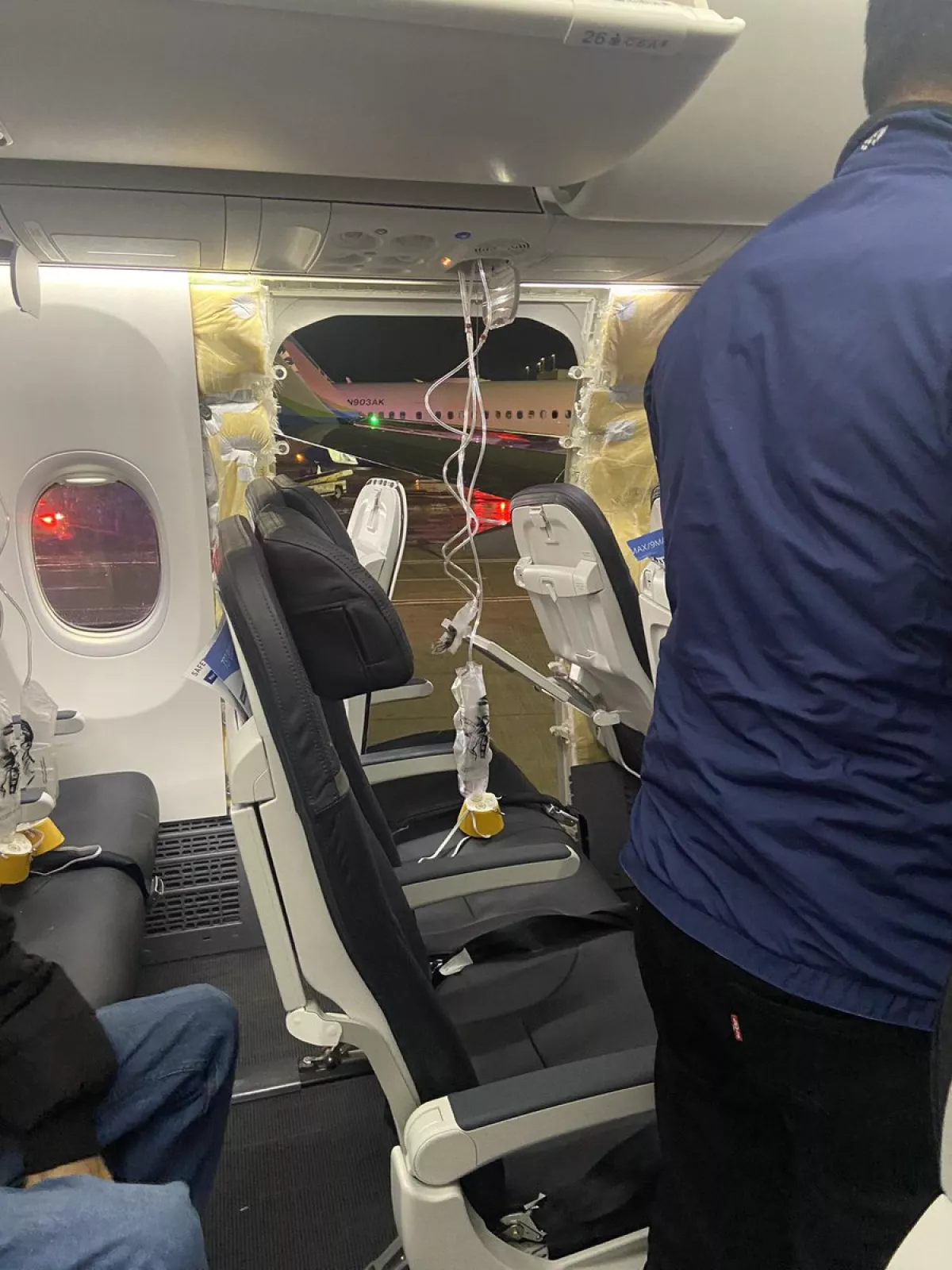Is this goodbye, Boeing? From flying doors, missing defect parts to fatal South Korean airplane crash
Boeing has faced a cascade of challenges in 2024, marked by financial losses, safety issues, and internal strife. The company has struggled to recover from a crisis of confidence stemming from safety concerns, a significant strike, and operational setbacks, including a troubled space program. The American manufacturing giant's finished the year with an even more devastating blow, namely the crash-landing of a Boeing 737-800 in South Korea, claiming 179 lives. Amid all of these difficulties, Boeing races scrutiny over its corporate culture, which critics say prioritizes profits over safety and quality.
The year began with a safety incident involving a brand-new Boeing 737 Max operated by Alaska Airlines. An article by the BBC investigating the American giant's struggles recalls, that a poorly secured panel over an unused emergency exit detached mid-air during the January flight, highlighting persistent manufacturing issues. While no passengers were harmed, the incident brought renewed attention to quality problems at Boeing and its supplier Spirit AeroSystems. As investigators from the US National Transportation Safety Board pointed out, it could have been much worse.
What made the incident stand out was the fact that the 737 Max was Boeing's newest aircraft and its bestselling model in history. Since its entry into service, more than 1,600 have been sent to airlines and a further 4,800 are on order. Defects in fuselage components, tail assemblies, and lightning strike protection for fuel tanks have raised questions about systemic lapses in quality control.
Fatal 737 Max accidents
The 737 Max, Boeing's best-selling model, already carried a tarnished reputation following two fatal crashes in 2018 and 2019, in Indonesia and Ethiopia which killed all of the 346 people on board. Investigations blamed a poorly designed flight control software system, installed to prevent pilots, who were used to earlier versions of the 737, from needing expensive retraining. In the aftermath of those crashes, the 737 Max was grounded for 20 months worldwide as regulators examined every aspect of its design.

A 2020 congressional report accused Boeing of jeopardizing public safety by prioritizing cost-cutting and speed over quality. "Attention to share price and profit margins alone has proven to be a flawed strategy," stated the Foundation for Aviation Safety, chaired by former Boeing whistleblower Ed Pierson.
Whistleblowers and Internal Strife
Whistleblowers like Sam Mohawk, a quality assurance investigator, have exposed ongoing chaos at Boeing’s Renton factory, where the 737 Max is produced. Mohawk claims that post-pandemic pressures to increase production led to thousands of faulty or "non-conforming" parts going missing, and potentially being fitted aboard aircraft that have since been sent to customers. “The whole system was just in shambles,” he said, describing a breakdown in oversight.
The incident with the Alaska Airlines plane brought problem with Boeings main supplier Spirit AeroSystems to the wider attention, which makes a number of large aircraft components including the main body. These included manufacturing defects affecting parts of fuselages, tail and rudder assemblies, as well as sealants applied as protection against the effect of lightning strikes in central fuel tanks.

Another whistleblower, known only as Nathan who worked at Boeing’s Everett factory, reported low morale and corner-cutting on production lines. "Employees don’t always follow the rules because they feel the pressure from their manager," he said, further emphasizing the disconnect between management rhetoric and factory-floor realities.
Despite this mountain of damning revelations, new CEO Kelly Ortberg has pledged to restore trust and overhaul corporate culture. Ortberg aims to prioritize safety and quality through a comprehensive improvement plan launched earlier this year. Industry veteran Mike Dunlop praised Ortberg's efforts, stating, “What Kelly Ortberg is doing is focusing back on their core principles: to build airplanes as effectively and safely as possible.”
Boeing’s financial woes deepened with a strike by over 30,000 unionized workers, primarily in Washington State. Dissatisfied with a new four-year contract and seeking better pay and benefits, employees halted production of key models like the 737 Max and 777 for seven weeks. The strike, which cost Boeing an estimated $5.5 billion, was a direct response to years of perceived neglect by previous management. “It was obvious to them that the old management had basically screwed them,” said Bjorn Fehrm, an analyst at Leeham Company.
In response, Boeing agreed to a 38% pay increase over four years, but the strike exacerbated existing financial losses. In the first nine months of 2024, Boeing reported nearly $8 billion in losses and announced plans to cut 17,000 jobs, or 10% of its workforce.
Airbus and Market Dynamics
This avalanche of Boeing’s troubles have allowed its European rival Airbus to pull ahead. In the first nine months of 2024, Boeing delivered 291 planes compared to Airbus’s 497. This gap reflects five consecutive years of underperformance by Boeing. Customers like Ryanair and Southwest Airlines have cut growth forecasts or announced layoffs due to delayed aircraft deliveries.
Despite Airbus’s strong position, its own production delays and backlogged orders (nearly 8,700 aircraft) limit its ability to fully capitalize on Boeing’s struggles. The global aviation market, meanwhile, faces high demand, with estimates suggesting over 40,000 new aircraft will be needed in the next two decades to replace aging fleets and meet growing air travel needs.

The two manufacturer's inability to meet market demand could create opportunities for third-party manufacturers like Brazil’s Embraer or China’s Comac to make gains. According to Fehrm, “Over the next five to 10 years, there will be a gap between what the market is asking for and what Airbus and Boeing can deliver. It’s open for a third player.”
Cautionary tale from out of space
As if Boeing's struggles on earth were not bad enough, the problems the company is facing are not limited to its airplane manufacturing. The space division has also struggled greatly, evident from the two astronauts that were left stranded on the International Space Station in June 2024 when a potential fault was detected in the Starliner capsule, making its return to Earth too risky. The incident further tarnished the company’s reputation for reliability and highlights the need for significant cultural shifts at the American giant.
By Nazrin Sadigova








